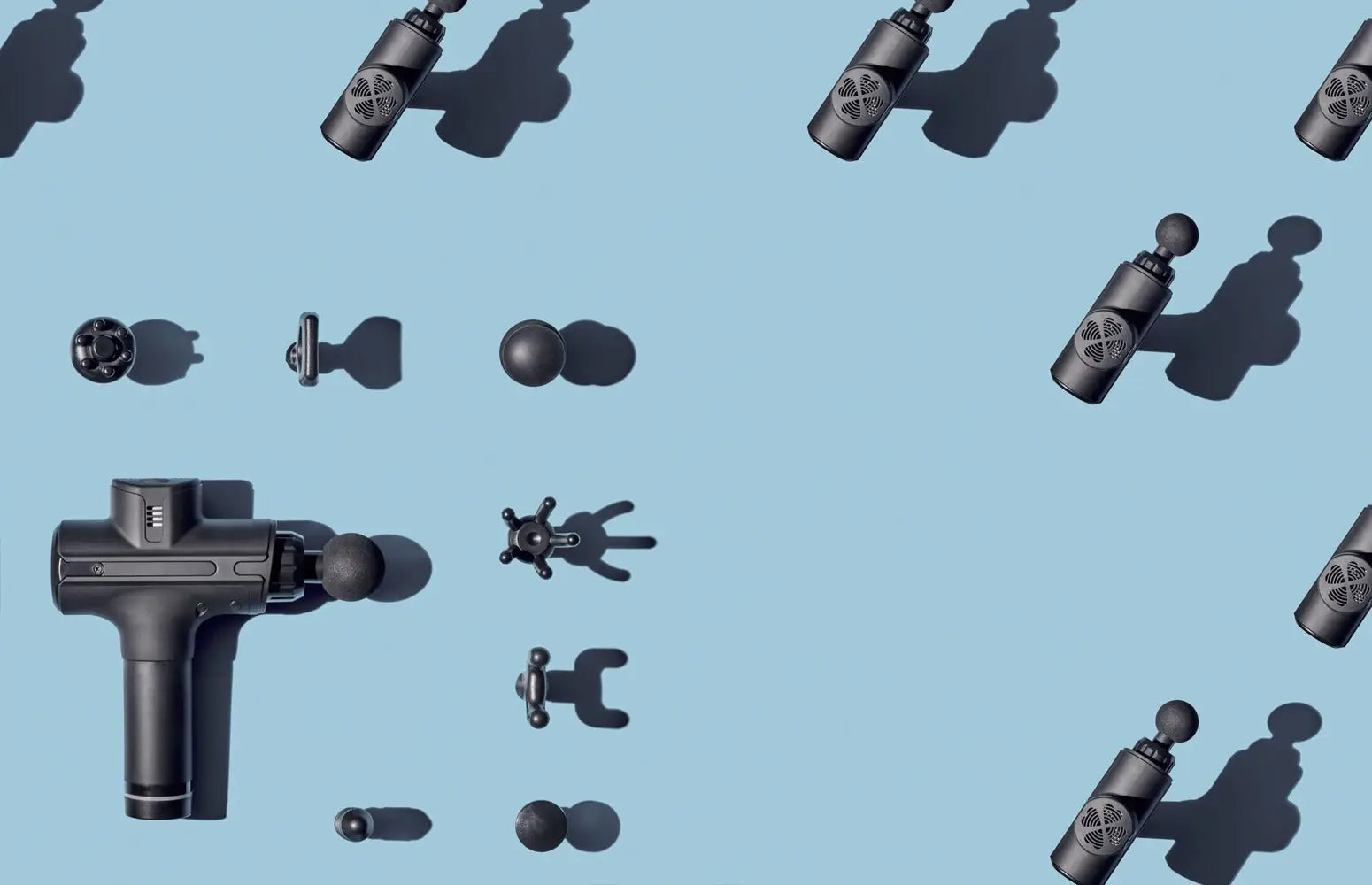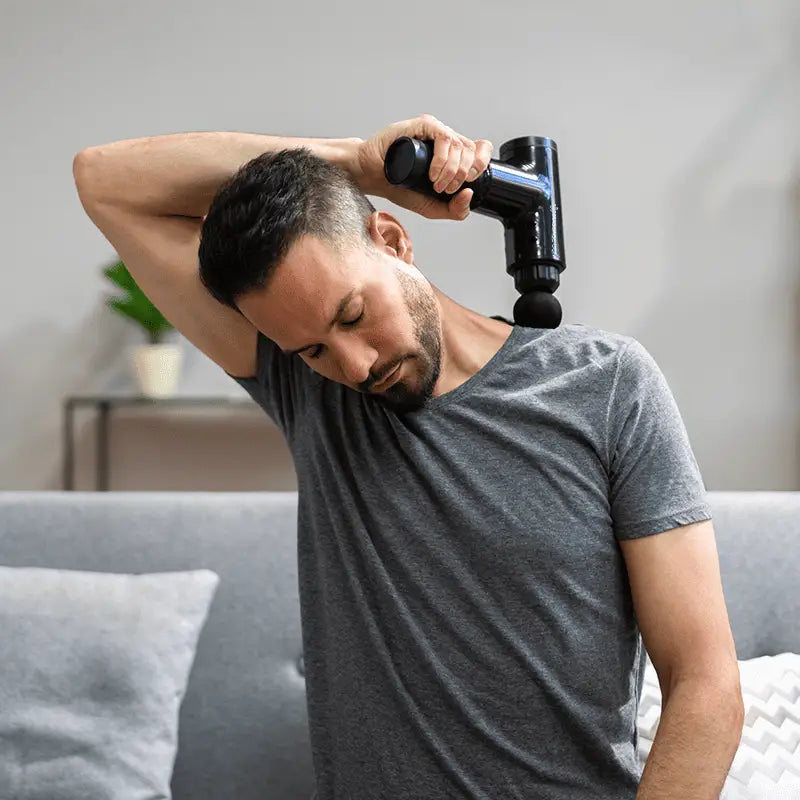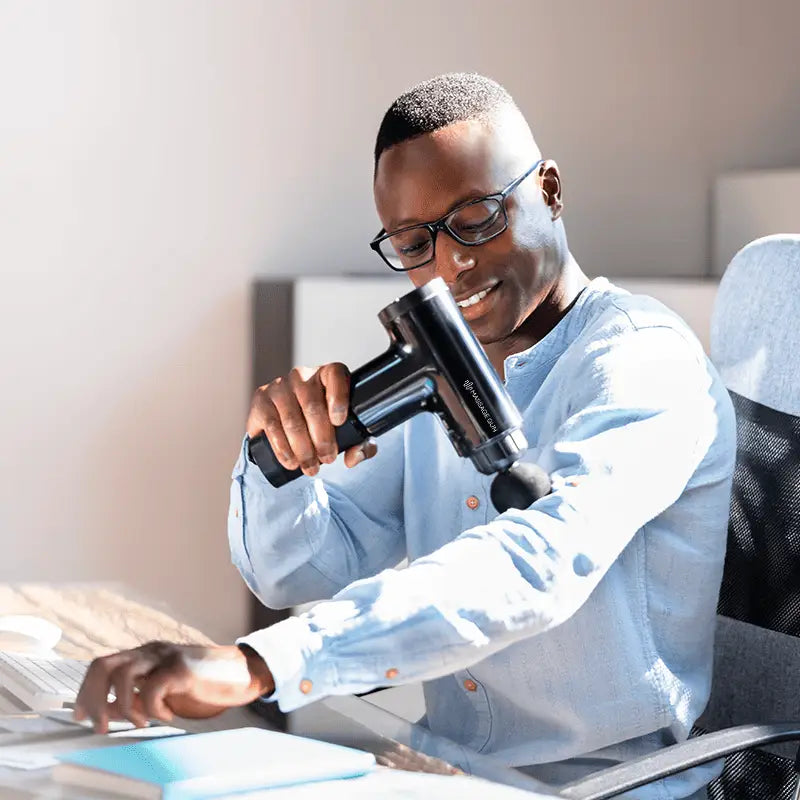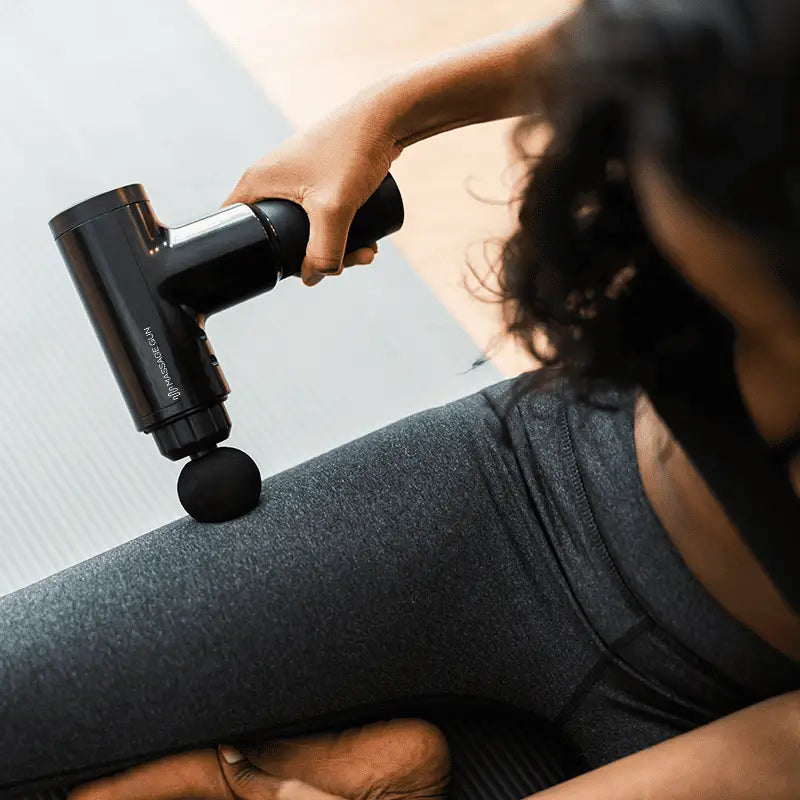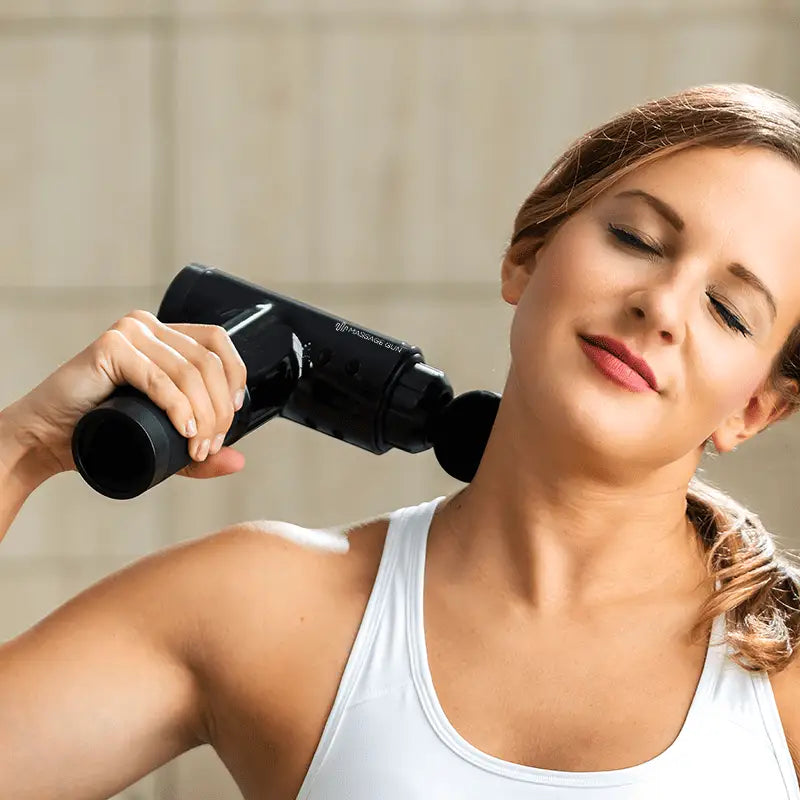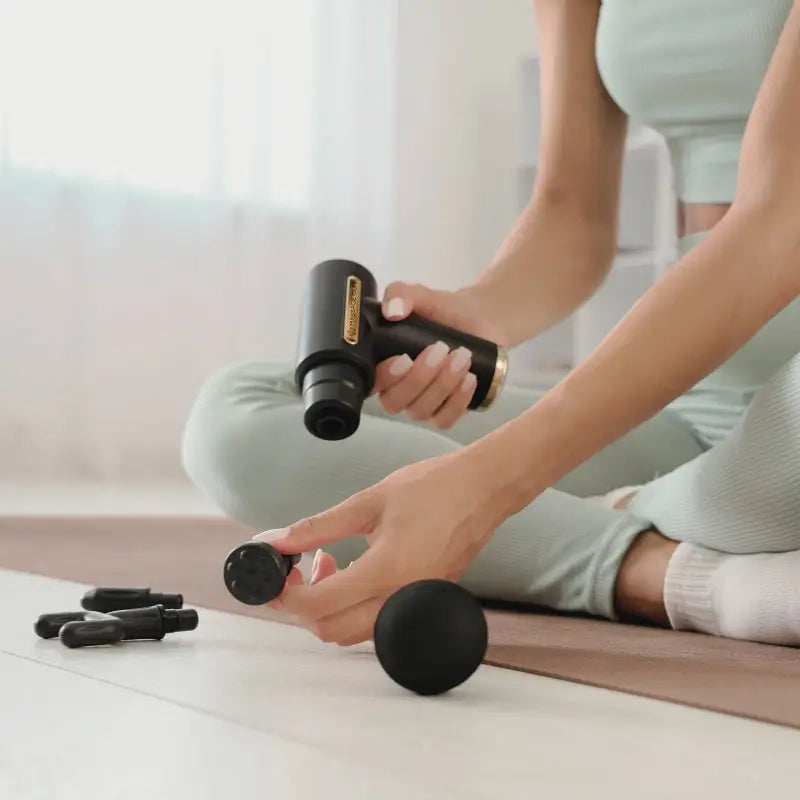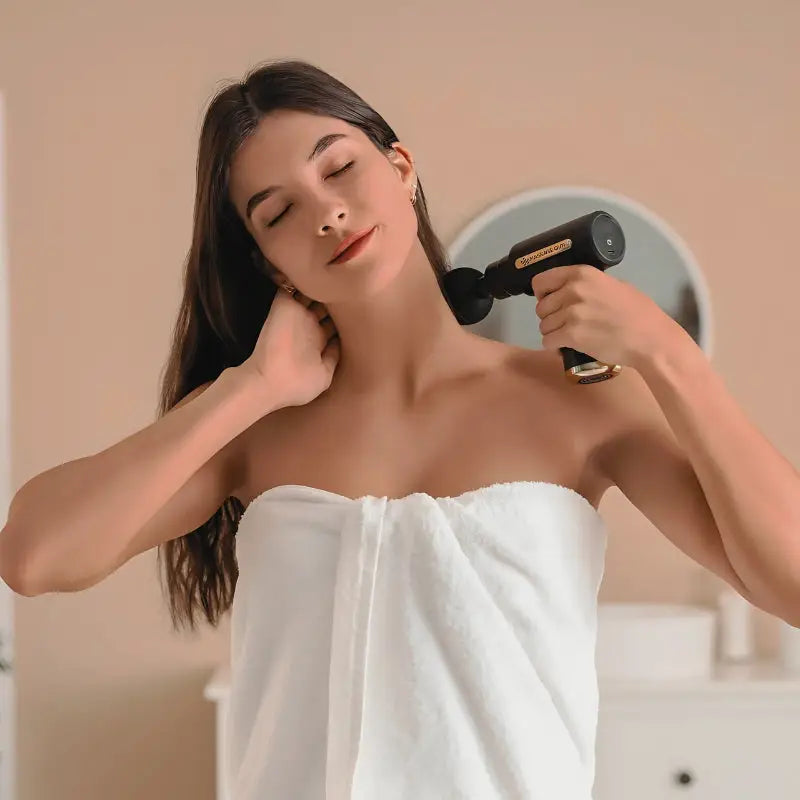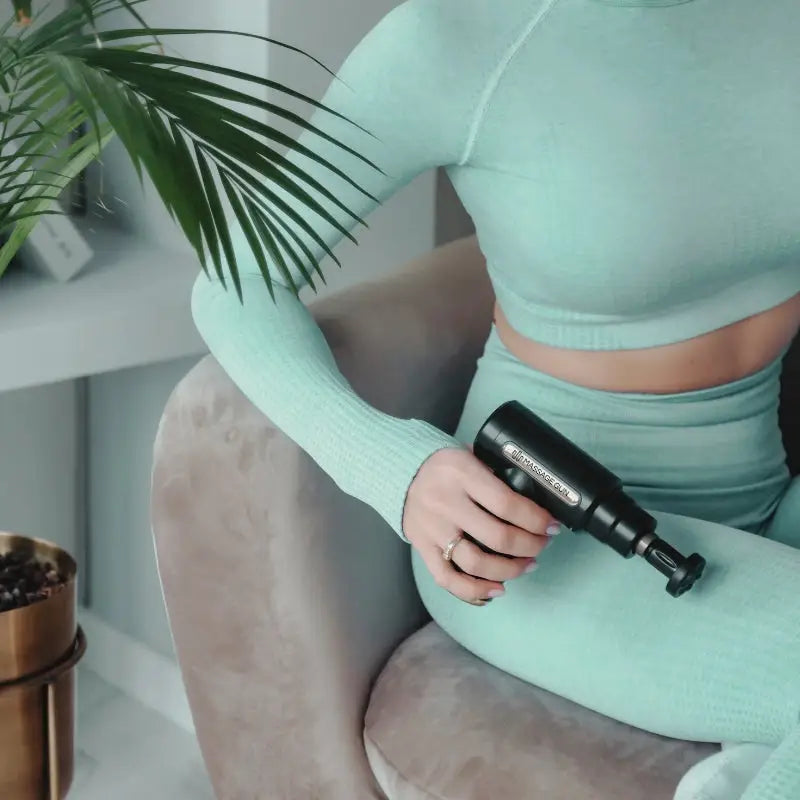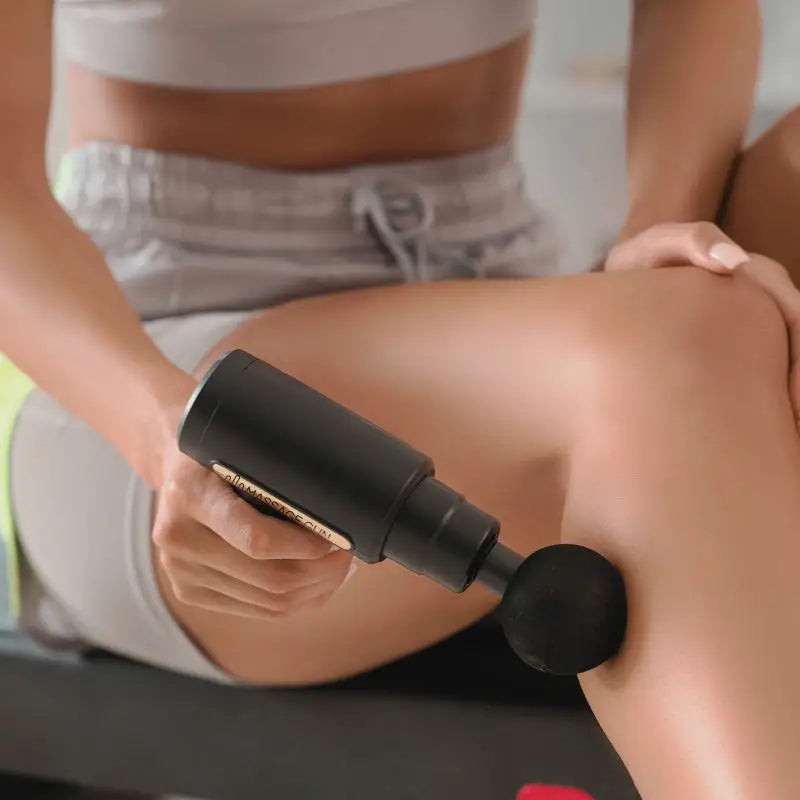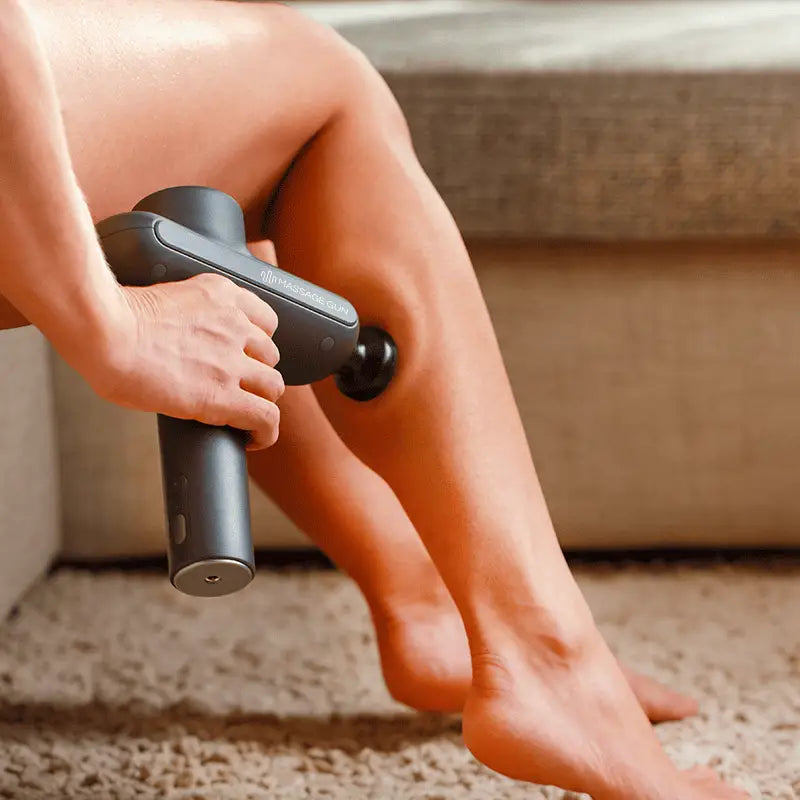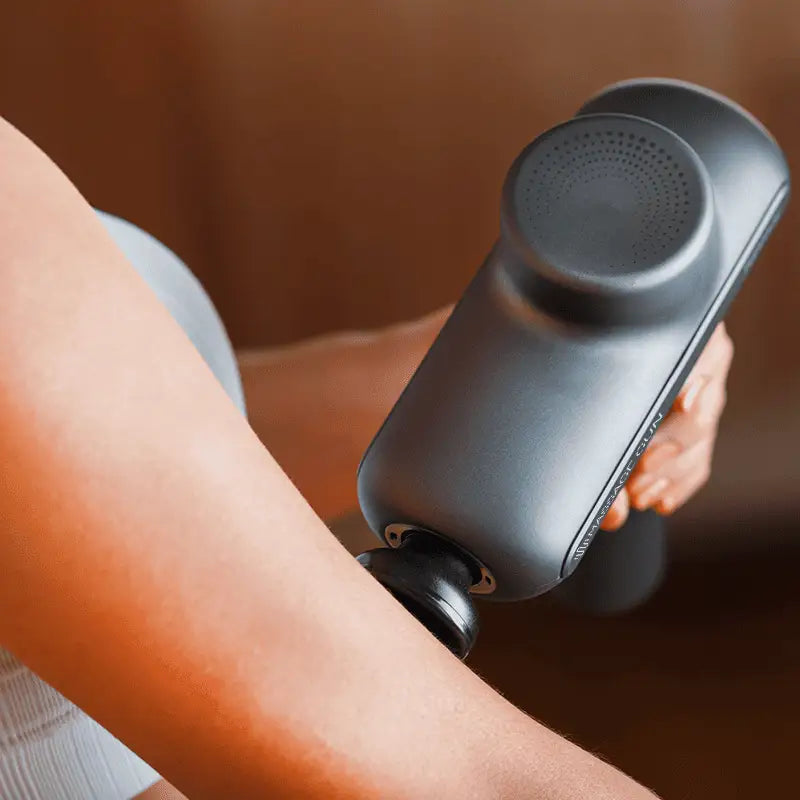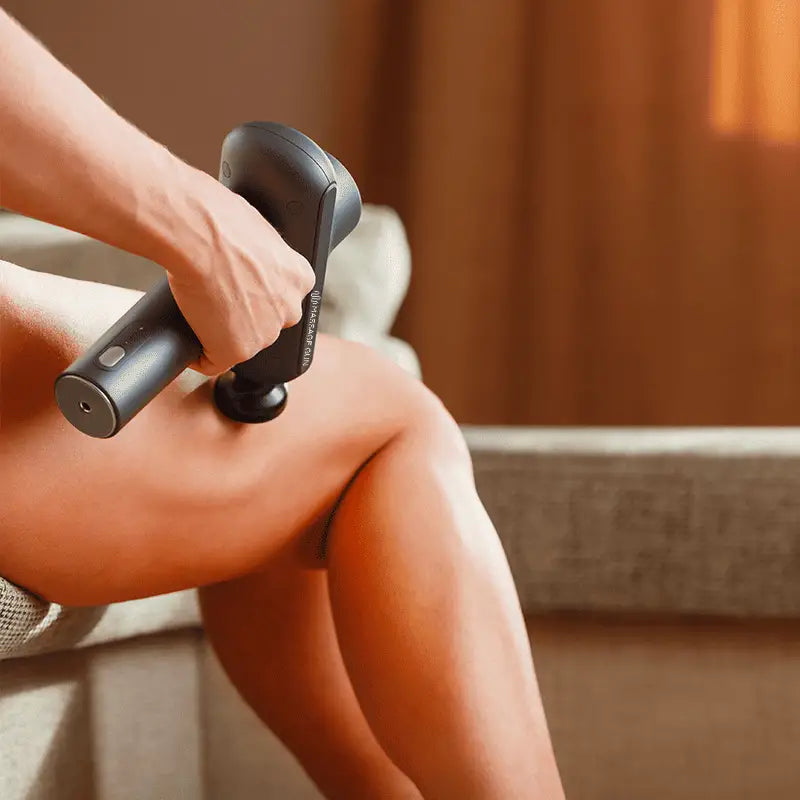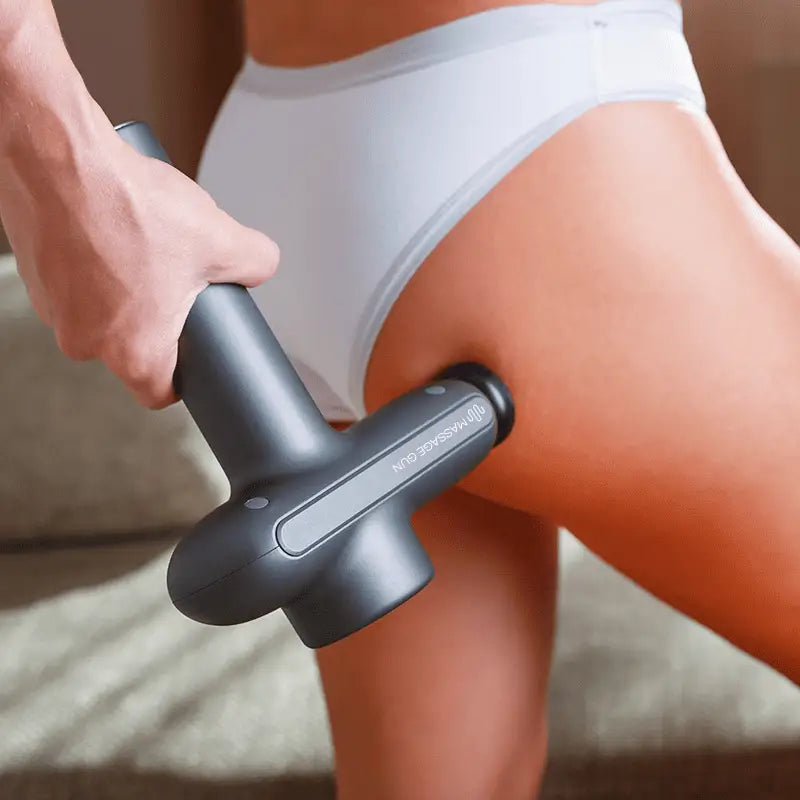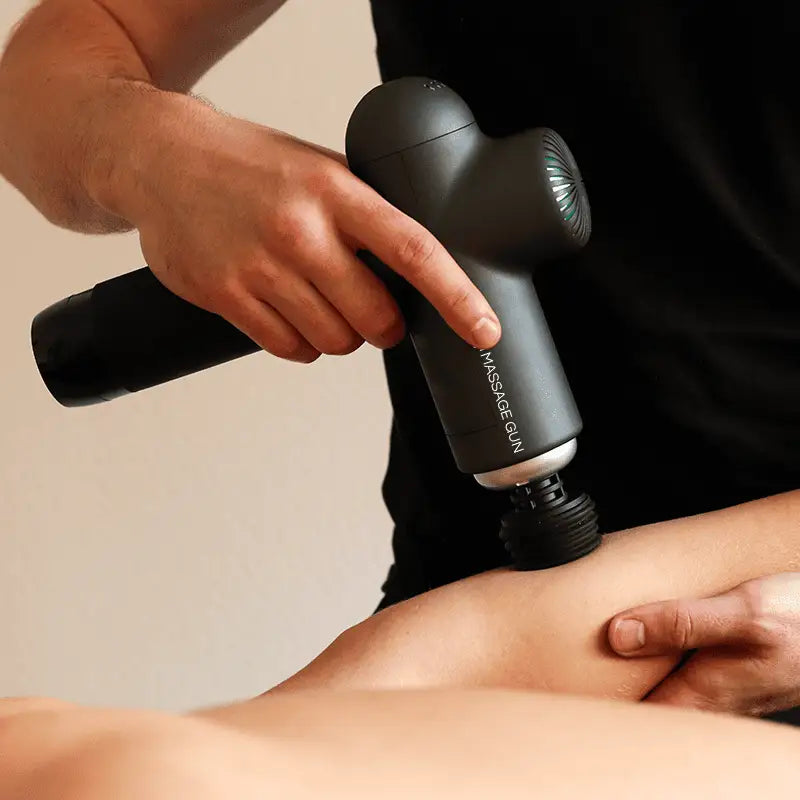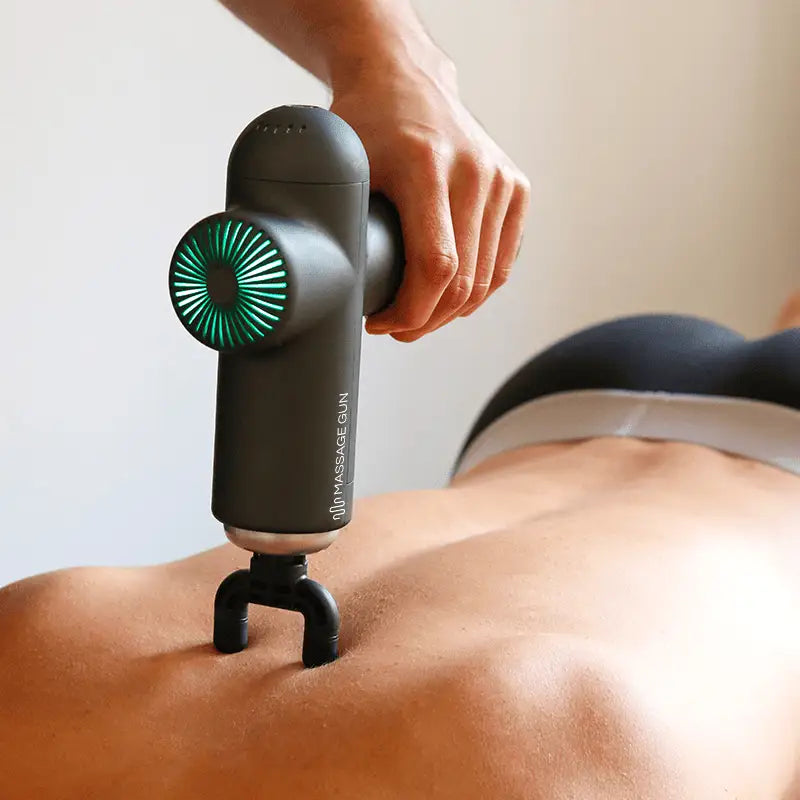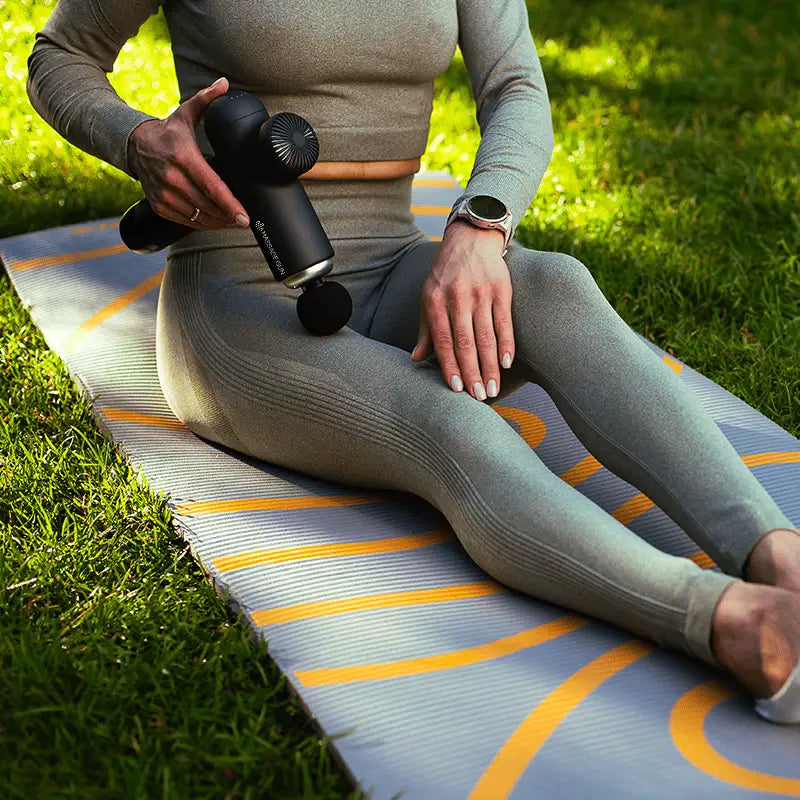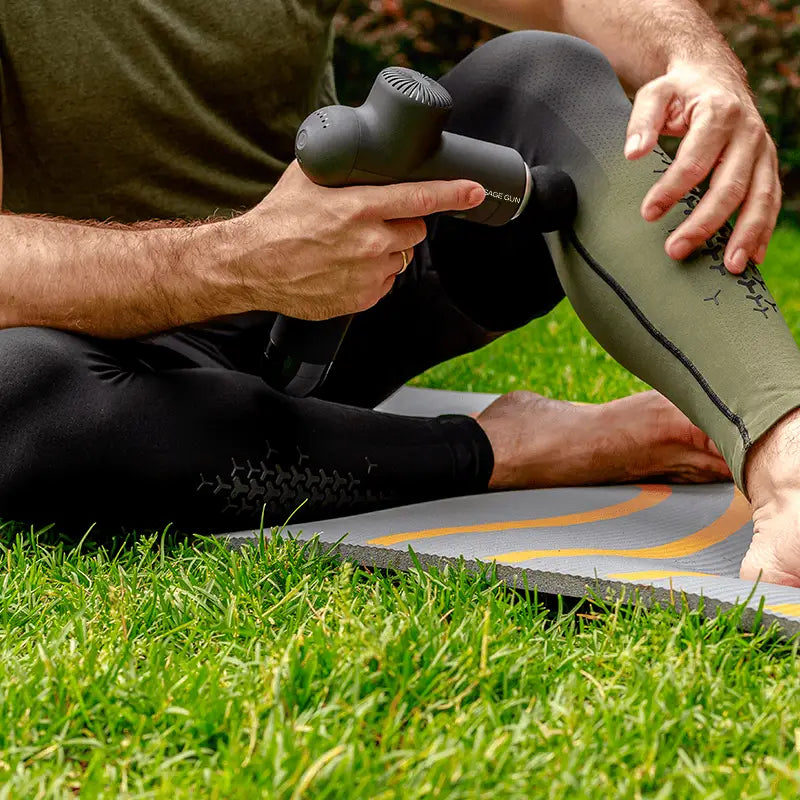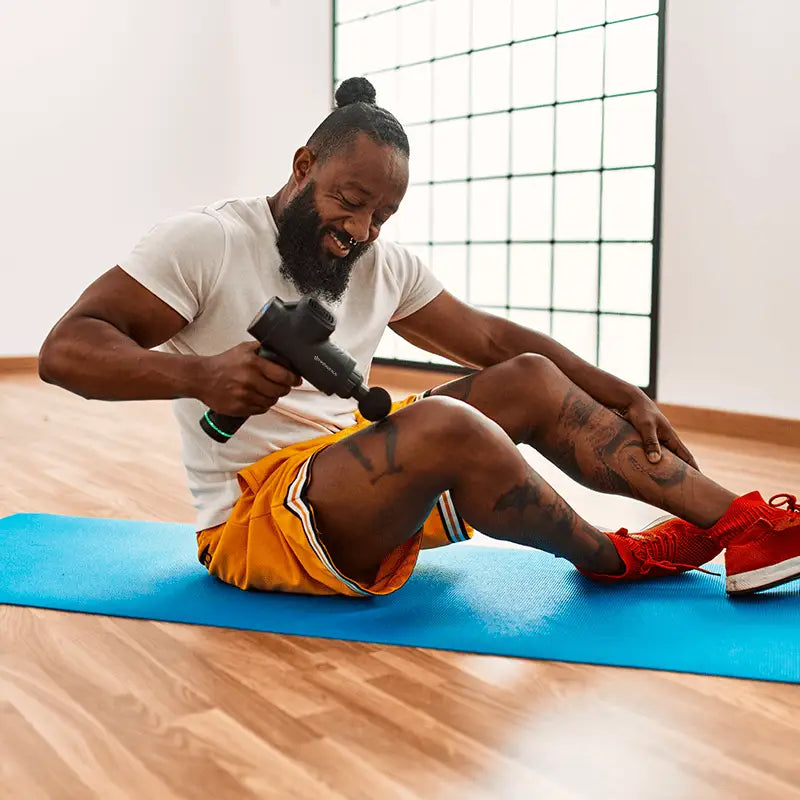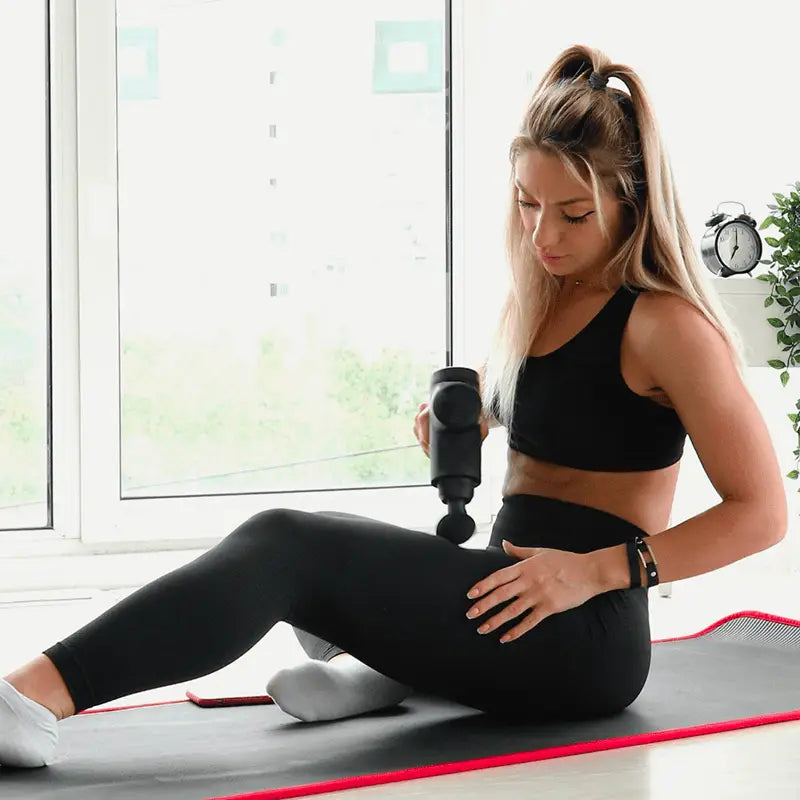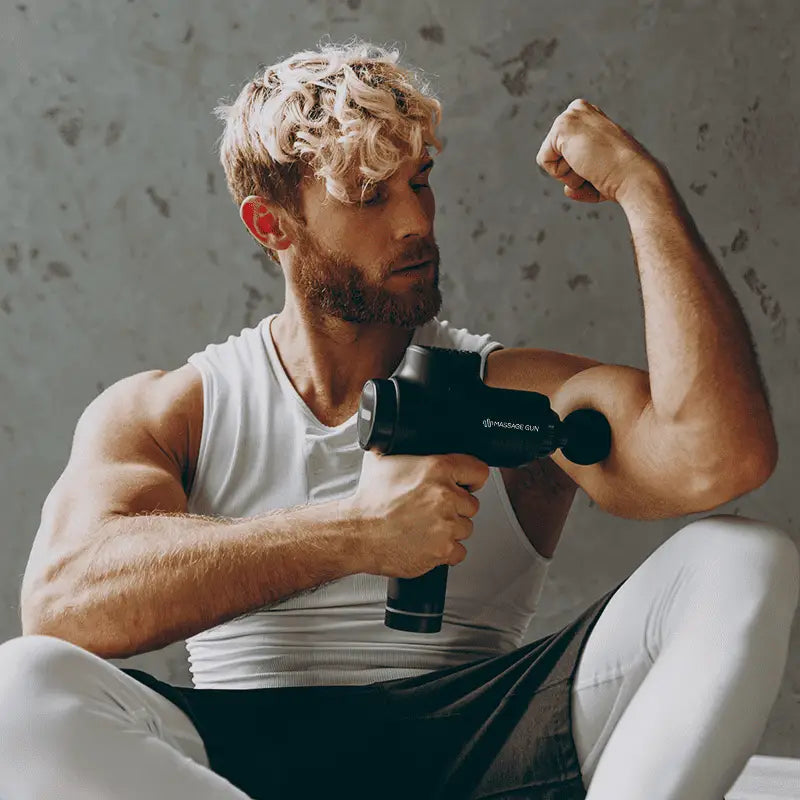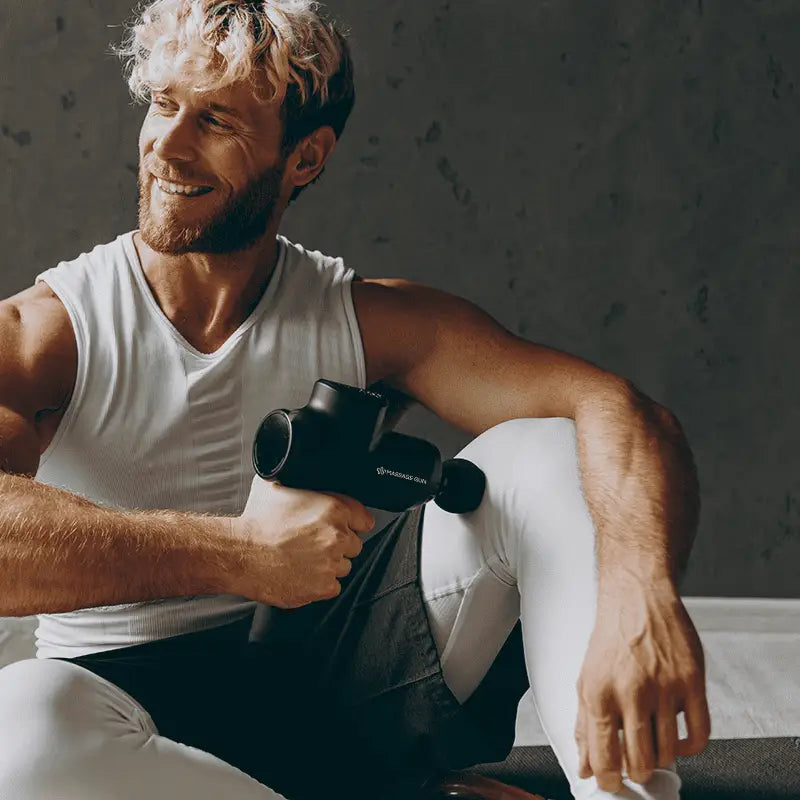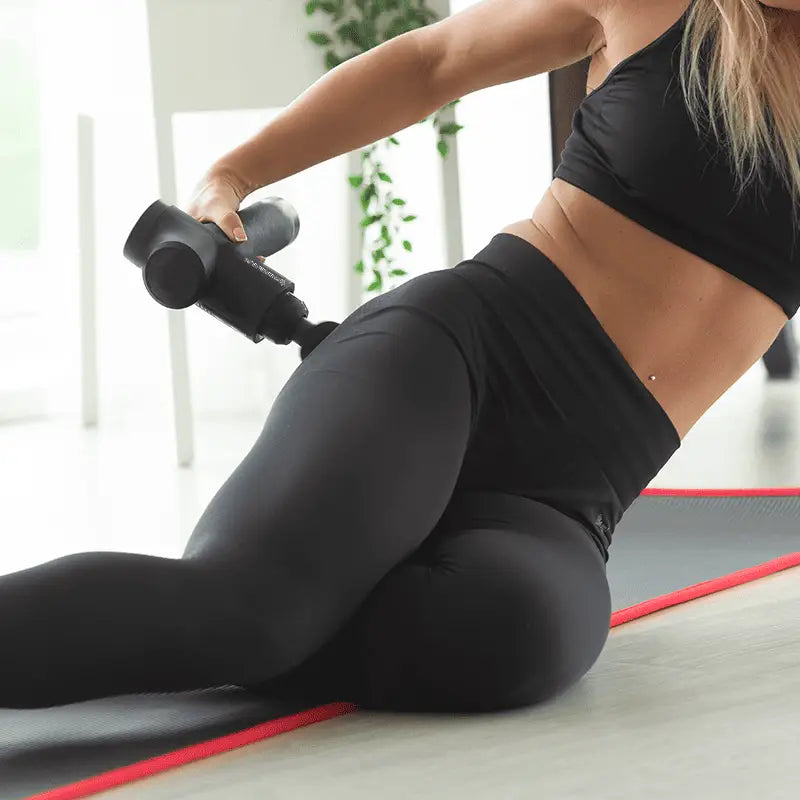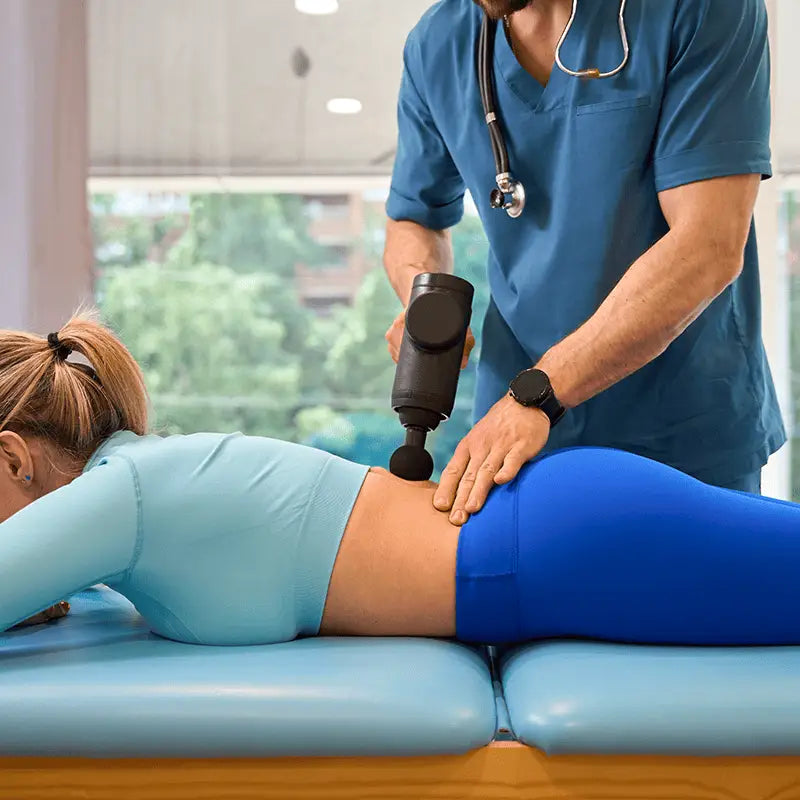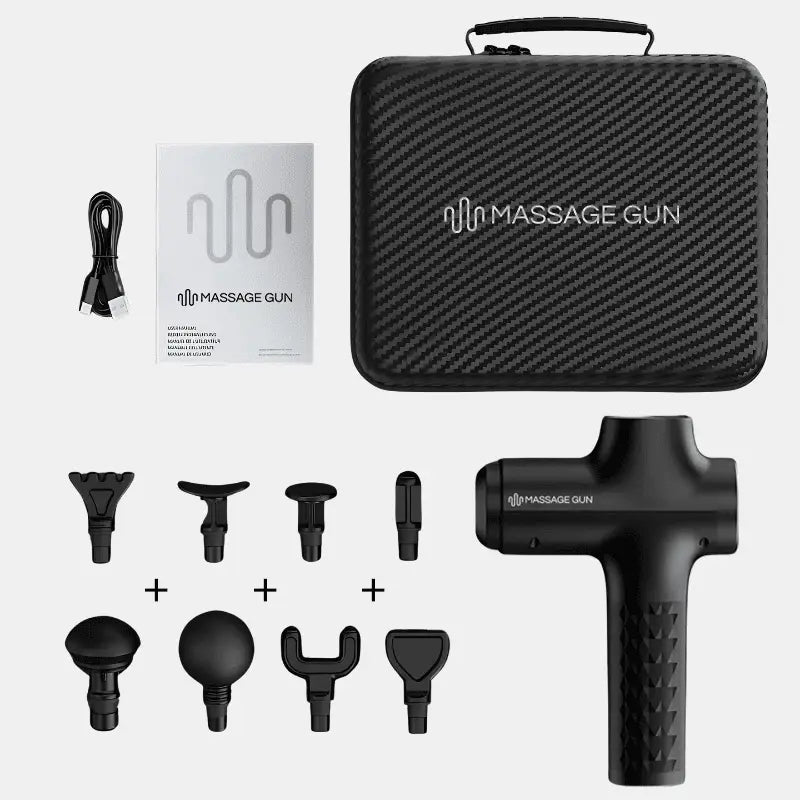Les pistolets de massage sont devenus populaires pour soulager les douleurs musculaires et améliorer la circulation sanguine. Ces appareils, également appelés outils de thérapie par percussion , utilisent des impulsions rapides pour cibler des groupes musculaires spécifiques. Cependant, nombreux sont ceux qui se demandent si les pistolets de massage sont sans danger pour tous.
Bien qu'ils offrent des avantages tels que la réduction des tensions musculaires, le risque de blessure peut augmenter en cas d'utilisation inappropriée. Comprendre comment utiliser un pistolet de massage en toute sécurité est essentiel pour optimiser la récupération musculaire tout en évitant les blessures potentielles.
Ce guide explorera à la fois les avantages et les dangers des pistolets de massage , avec des conseils d'experts sur la façon de les intégrer en toute sécurité dans votre routine de bien-être.
La science derrière les pistolets de massage
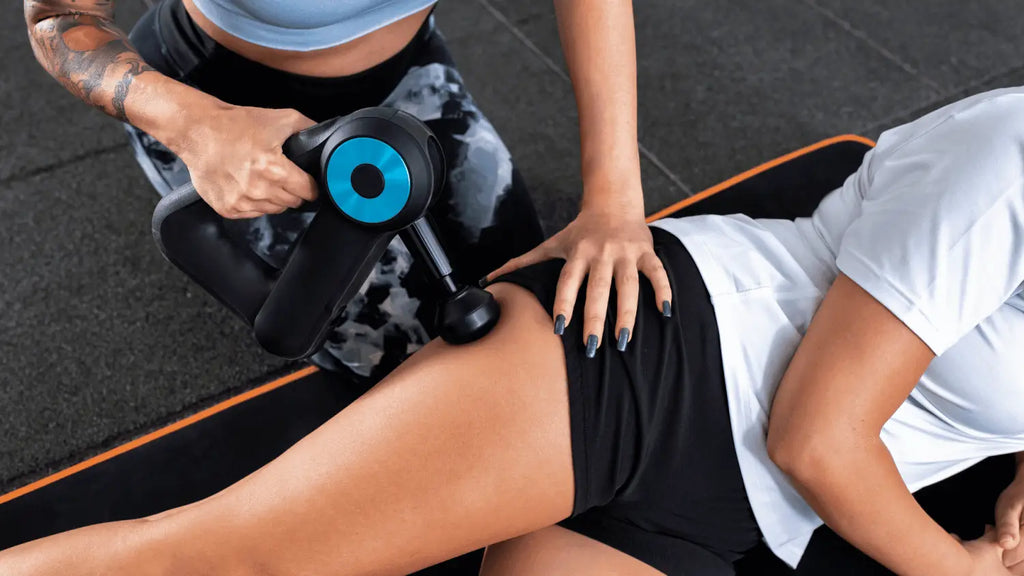
Comment fonctionne la thérapie par percussion ?
La thérapie par percussion utilise des vibrations à haute vitesse pour pénétrer les tissus mous et réduire les douleurs musculaires. En appliquant une pression à différentes vitesses, les pistolets de massage stimulent les fibres musculaires et soulagent les courbatures.
Ce type de thérapie augmente la circulation sanguine, favorisant une récupération plus rapide en éliminant l'acide lactique accumulé après un entraînement intense. Les athlètes et les personnes en convalescence utilisent souvent des pistolets de massage dans le cadre de leur routine post-entraînement pour améliorer l'amplitude des mouvements et la performance musculaire.
Cependant, même si les avantages sont évidents, une utilisation incorrecte peut entraîner de graves problèmes, tels que des lésions tissulaires ou nerveuses.
Avantages de la thérapie par percussion
Les bienfaits des pistolets de massage vont au-delà du soulagement de la douleur. Ces appareils améliorent la circulation sanguine, réduisent les tensions musculaires et préviennent même les courbatures d'apparition tardive (DOMS) après l'effort.
Le massage par percussion peut également améliorer la mobilité et contribuer à la cicatrisation des blessures antérieures. Des études publiées dans le Journal of Sports Medicine indiquent que la thérapie par percussion favorise considérablement la récupération musculaire et améliore les performances sportives globales.
Cependant, la prudence est de mise, car une mauvaise utilisation peut entraîner des blessures graves, en particulier dans les zones sensibles du corps humain.
Risques généraux et précautions liés à l'utilisation d'un pistolet de massage
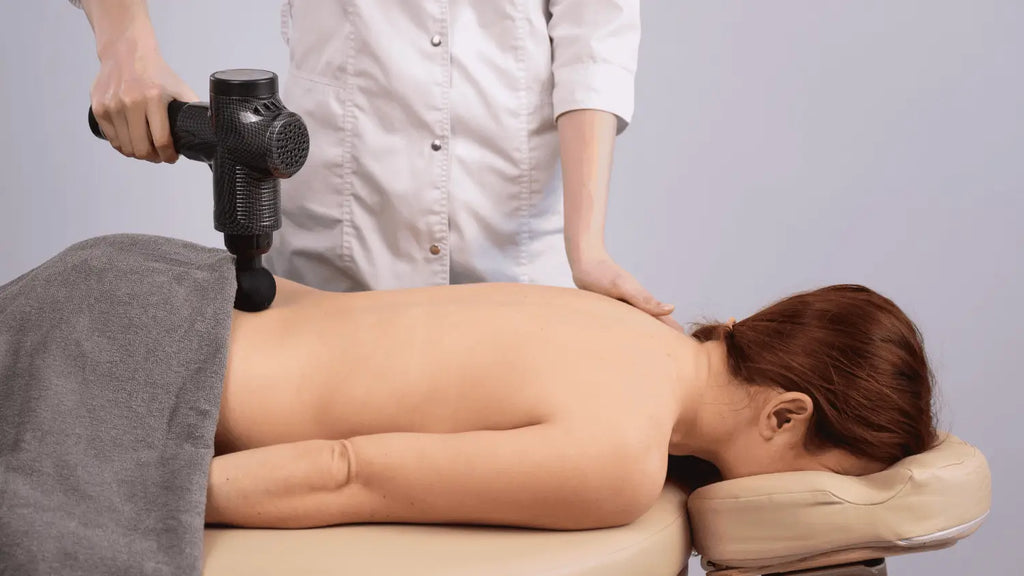
Risques courants liés à l'utilisation d'un pistolet de massage
Une mauvaise utilisation d'un pistolet de massage manuel peut entraîner des blessures graves. Appliquer une force excessive ou l'utiliser sur des zones comme le cou ou la colonne vertébrale peut endommager les muscles ou les artères.
Un cas signalé de dissection de l'artère vertébrale lié à un massage du cou souligne les dangers de l'utilisation de ces appareils sur des zones sensibles . Les patients souffrant de certaines pathologies, comme une thrombose veineuse profonde ou des problèmes vasculaires, doivent éviter d'utiliser un pistolet de massage afin de prévenir les situations d'urgence.
Suivez toujours les consignes de sécurité et consultez un professionnel de la santé avant de commencer un traitement avec ces appareils.
Contre-indications : Quand ne pas utiliser un pistolet de massage ?
Certaines pathologies rendent l'utilisation d'un pistolet de massage dangereuse. Les personnes sous anticoagulants, souffrant de varices ou ayant récemment subi une intervention chirurgicale doivent éviter d'utiliser cet appareil, surtout sur les zones affectées.
Utiliser un pistolet de massage sur les veines, les tissus enflammés ou les zones proches des ganglions lymphatiques peut entraîner des ecchymoses, des gonflements ou des blessures plus graves. Les thérapeutes recommandent d'éviter le cou et les autres zones délicates comme les articulations, car ces zones sont sujettes aux lésions nerveuses.
De plus, les personnes souffrant de blessures aiguës doivent éviter d’utiliser un pistolet de massage jusqu’à ce que leur état s’améliore.
Dangers d'une mauvaise utilisation et d'une surutilisation
L'utilisation excessive d'un pistolet de massage peut entraîner des complications à long terme, telles que des lésions nerveuses, des ecchymoses, voire une rhabdomyolyse, une affection caractérisée par la dégradation des fibres musculaires et la libération de protéines nocives dans la circulation sanguine. Ce problème est rare, mais peut survenir si le pistolet de massage est appliqué trop vigoureusement ou trop longtemps sur un seul muscle.
Pour prévenir les blessures, limitez l'utilisation à deux minutes maximum par groupe musculaire. N'oubliez pas que la thérapie par percussion est destinée à compléter, et non à remplacer, d'autres formes de traitement comme les étirements ou la kinésithérapie.
Pratiques sécuritaires pour l'utilisation d'un pistolet de massage
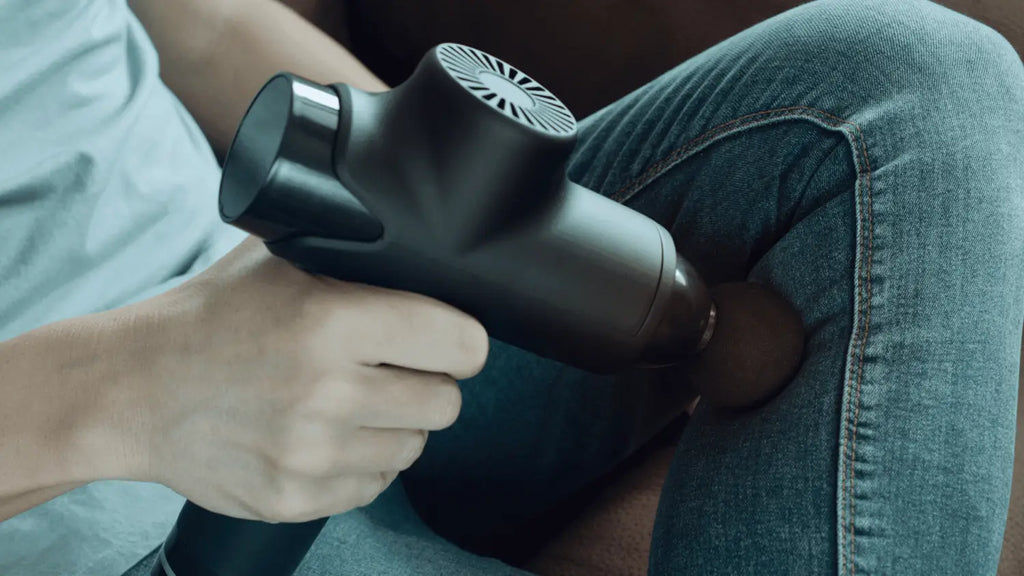
Comment utiliser un pistolet de massage en toute sécurité ?
Utiliser un pistolet de massage en toute sécurité commence par comprendre ses réglages et ses techniques d'application. Commencez par une faible intensité et augmentez progressivement la vitesse à mesure que vos muscles s'adaptent. Concentrez-vous sur les grands groupes musculaires comme les mollets, les cuisses ou les épaules, et évitez les zones à faible masse musculaire, comme le cou ou la colonne vertébrale.
Appliquez l'appareil par intervalles courts, généralement de 30 secondes à une minute par zone. Cette approche minimise le risque de lésions tissulaires tout en favorisant une récupération musculaire efficace.
Où peut-on utiliser un pistolet de massage en toute sécurité ?
Les pistolets de massage sont généralement sans danger pour les groupes musculaires plus importants comme les quadriceps, les ischio-jambiers et les fessiers. Ces zones sont suffisamment résistantes pour supporter les mouvements de percussion sans risque de blessure. Vous pouvez également utiliser le masseur portatif sur le dos et les bras, mais évitez de l'appliquer sur les zones osseuses ou les articulations.
Les experts recommandent d'utiliser l'outil après l'entraînement pour soulager les douleurs musculaires et améliorer la circulation sanguine vers la zone ciblée. Suivez toujours les consignes de sécurité du fabricant et ajustez la force selon votre niveau de confort.
Où devriez-vous éviter d’utiliser un pistolet de massage ?
Évitez d'utiliser un pistolet de massage sur le cou, les articulations ou les veines, car ces zones sont très sensibles et peuvent facilement être endommagées. Le cou est particulièrement vulnérable en raison de sa proximité avec des artères importantes comme l'artère vertébrale, qui peuvent être endommagées par une pression excessive.
Les thérapeutes déconseillent l'utilisation des pistolets de massage sur la tête, le visage ou les ganglions lymphatiques, car ces zones sont sujettes à de graves complications . Se concentrer sur les parties plus larges et plus musclées du corps garantit une utilisation plus sûre et maximise les bienfaits de la thérapie par percussion.
Fréquence d’utilisation : à quelle fréquence est-il sécuritaire ?
Pour la plupart des gens, utiliser un pistolet de massage deux à trois fois par semaine est suffisant. Une utilisation excessive, notamment sur des zones déjà douloureuses ou blessées, peut entraîner des douleurs chroniques ou une dégradation des tissus. Les experts recommandent de limiter les séances à une ou deux minutes par muscle afin d'éviter de solliciter les tissus mous.
Les jours de repos entre les séances permettent à vos muscles de guérir, réduisant ainsi le risque de lésions à long terme. Si vous débutez avec les pistolets de massage, commencez doucement et augmentez progressivement la fréquence à mesure que votre corps s'adapte au traitement.
Les pistolets de massage sont-ils sûrs pour tout le monde ?
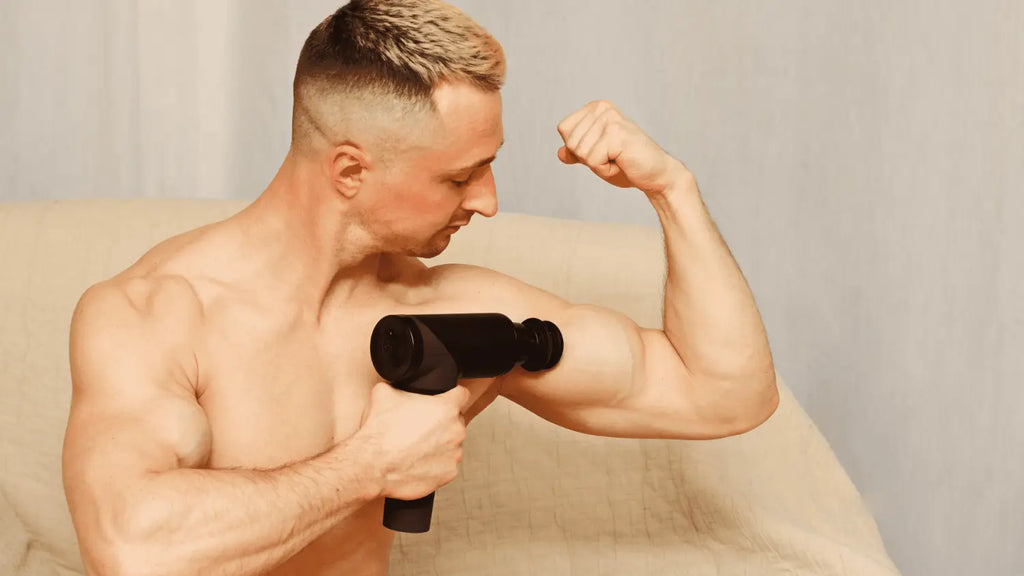
Personnes ayant des conditions particulières
Bien que les pistolets de massage soient sans danger pour la plupart des personnes, la prudence est de mise pour les personnes souffrant de certains problèmes de santé. Les patients souffrant de thrombose veineuse profonde, prenant des anticoagulants ou d'autres problèmes vasculaires doivent éviter d'utiliser ces appareils.
Les personnes se remettant d'une intervention chirurgicale ou souffrant de maladies chroniques comme l'ostéoporose doivent également consulter un professionnel de santé avant d'utiliser un pistolet de massage. Les professionnels de santé peuvent suggérer des traitements alternatifs offrant des bienfaits similaires sans les risques associés à la thérapie par percussion.
Peut-on utiliser un pistolet de massage pendant la grossesse ?
L'utilisation d'un pistolet de massage pendant la grossesse requiert une prudence accrue. Les femmes enceintes doivent éviter d'utiliser l'appareil sur le bas du dos, l'abdomen ou les veines, car ces zones sont particulièrement sensibles.
Bien que les bienfaits du massage puissent soulager les douleurs musculaires pendant la grossesse, il est essentiel de consulter un professionnel de santé avant d'intégrer la thérapie par percussion à votre routine. Des alternatives plus sûres, comme les étirements doux ou le massage prénatal, peuvent être plus adaptées pour soulager les tensions musculaires pendant cette période.
Des perspectives radicalement nouvelles sur la sécurité des pistolets de massage
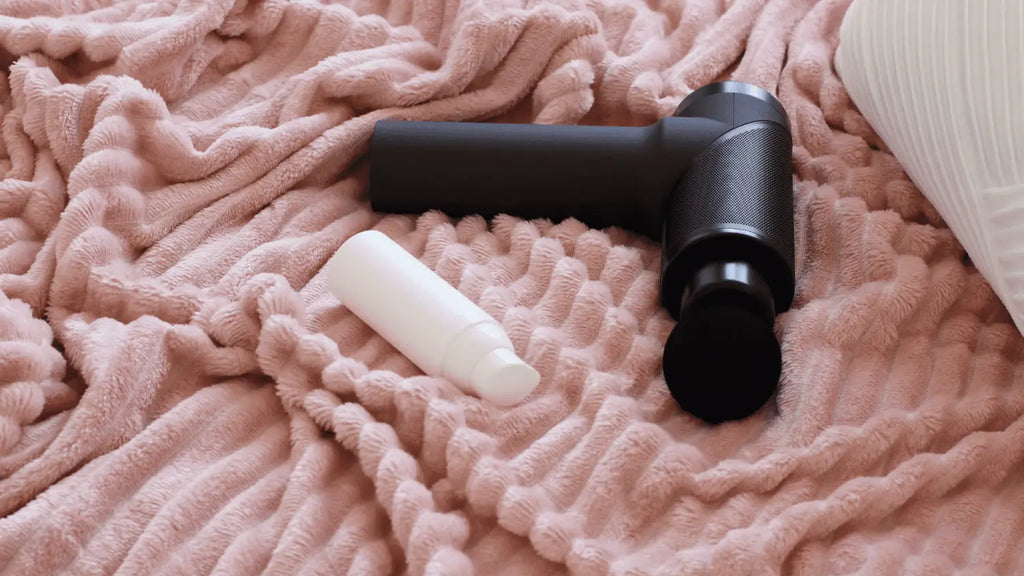
Sécurité à long terme : ce que nous ne savons pas encore
Bien que les pistolets de massage soient devenus courants dans le monde du fitness, les preuves à long terme de leur innocuité restent limitées. Les études actuelles se concentrent sur les bénéfices à court terme, comme l'amélioration de la récupération musculaire et de la circulation sanguine , mais il existe peu de données sur les effets d'une utilisation prolongée.
Des recherches continues sont nécessaires pour déterminer si une utilisation régulière et prolongée pourrait entraîner des risques invisibles pour la santé. Pour l'instant, la clé d'une utilisation sûre réside dans la modération, le suivi des conseils d'experts et l'écoute de son corps.
Personnaliser la sécurité en fonction des besoins individuels
Tous les utilisateurs de pistolets de massage ne se valent pas, et il est essentiel d'adapter son utilisation en fonction de facteurs individuels tels que la forme physique, les antécédents médicaux et la condition physique générale. Certaines personnes devront utiliser l'appareil avec plus de précautions que d'autres.
Par exemple, les personnes âgées ou à mobilité réduite devraient commencer par des séances à faible intensité pour éviter les blessures. Les professionnels de santé recommandent de consulter un kinésithérapeute pour obtenir des conseils personnalisés sur la manière d'intégrer la thérapie par percussion en toute sécurité à votre routine.
Conclusion

Les pistolets de massage offrent des avantages significatifs pour la récupération musculaire et le soulagement de la douleur, mais la sécurité doit toujours primer. Utiliser correctement l'appareil, suivre les conseils des experts et éviter les zones sensibles sera bénéfique.
Questions fréquemment posées
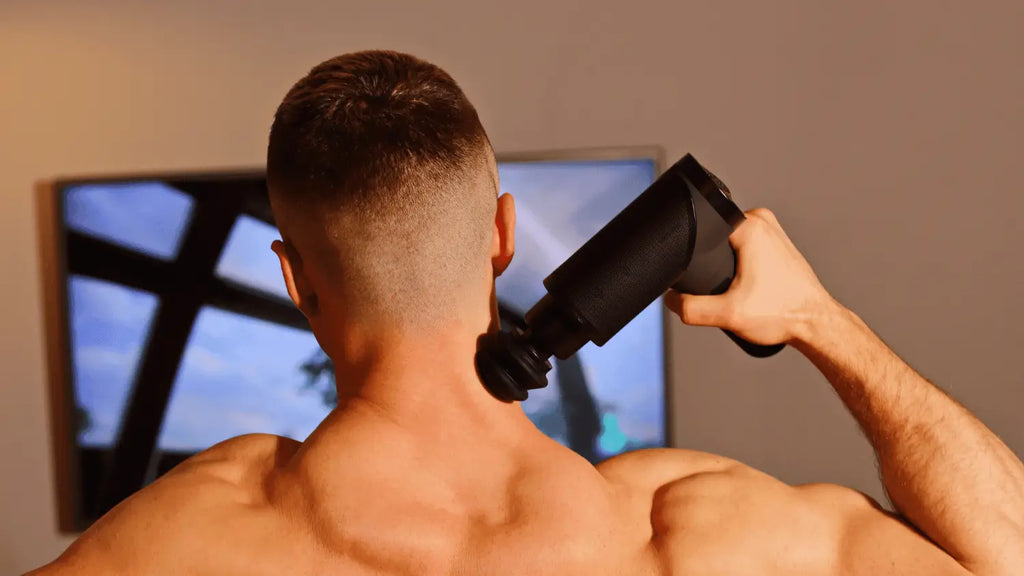
1. Les pistolets de massage sont-ils sûrs à utiliser au quotidien ?
Oui, les pistolets de massage sont généralement sans danger pour une utilisation quotidienne , mais il est important de les utiliser correctement. L'utilisation quotidienne doit se concentrer sur des zones ciblées du corps, comme les muscles endoloris, surtout après une séance d'entraînement. La puissance de ces appareils peut contribuer à réduire la douleur en améliorant la circulation sanguine vers les muscles tendus.
Cependant, une utilisation excessive ou une pression excessive peut entraîner une inflammation ou des ecchymoses. Pour prévenir les blessures, il est essentiel de suivre les consignes de sécurité et de laisser à votre corps le temps de récupérer entre les séances.
2. Un pistolet de massage peut-il causer des blessures ?
Oui, une mauvaise utilisation d'un pistolet de massage peut être dangereuse. Si vous appliquez une pression excessive ou l'utilisez sur des zones sensibles comme le cou, vous risquez d'endommager les nerfs, les vaisseaux sanguins ou même le tissu conjonctif .
Un pistolet de massage à percussion doit être utilisé avec précaution, en particulier sur les zones profondes douloureuses ou tendues. Soyez toujours à l'écoute de votre corps si vous ressentez une gêne pendant une séance et arrêtez immédiatement. Un massothérapeute certifié pourra vous conseiller sur l'utilisation sécuritaire de cet outil.
3. Est-il sécuritaire d’utiliser un pistolet de massage sur votre cou ?
Utiliser un pistolet de massage sur le cou peut être dangereux si l'on n'y prend pas garde . Le cou contient des artères importantes et des nerfs fragiles qui peuvent facilement être endommagés par une pression excessive. Dans certains cas, des personnes ont souffert de problèmes graves, comme une dissection de l'artère vertébrale, pouvant mettre leur vie en danger.
Un massothérapeute peut suggérer des alternatives plus sûres, comme le massage par rouleaux de mousse ou la thérapie par vibrations, pour soulager les douleurs cervicales. Soyez toujours prudent lorsque vous utilisez un appareil de massage près de votre cou.
4. Les pistolets de massage peuvent-ils endommager les nerfs ?
Oui, une pression excessive avec un pistolet de massage peut endommager les nerfs , en particulier dans les zones où les nerfs sont proches de la surface de la peau, comme le cou ou la colonne vertébrale. Mal utilisé, un pistolet de massage peut comprimer ou irriter ces nerfs, provoquant des symptômes tels que des picotements, des engourdissements, voire des douleurs persistantes. Commencez toujours par un réglage faible et augmentez progressivement l'intensité pour éviter de mettre vos nerfs en danger.
5. Les femmes enceintes peuvent-elles utiliser un pistolet de massage ?
Les femmes enceintes doivent faire preuve de prudence lorsqu'elles utilisent un pistolet de massage, en particulier sur les zones sensibles comme l' abdomen ou le bas du dos . Bien que la thérapie par vibrations puisse contribuer à réduire la douleur et le stress, il est essentiel de consulter un professionnel de santé avant d'utiliser un pistolet de massage pendant la grossesse.
Pour les personnes âgées ou les femmes enceintes, les thérapies ciblées axées sur la santé et le bien-être, comme le massage prénatal, peuvent être des alternatives plus sûres.
6. Les pistolets de massage sont-ils sûrs pour les personnes âgées ?
Oui, les pistolets de massage peuvent être sans danger pour les personnes âgées s'ils sont utilisés correctement et avec un encadrement approprié. Les personnes âgées à mobilité réduite ou souffrant de déchirures tendineuses doivent utiliser des réglages de faible intensité pour éviter les blessures.
L'essentiel est de cibler les grands groupes musculaires et d'éviter les zones osseuses où la masse musculaire est plus faible. Consulter un massothérapeute peut aider les personnes âgées à apprendre à utiliser un pistolet de massage en toute sécurité et à améliorer leur santé et leur bien-être général.
7. Un pistolet de massage peut-il être utilisé pour la récupération d’une blessure ?
Oui, les pistolets de massage sont souvent utilisés pour traiter les blessures en améliorant la circulation sanguine et en décontractant les tissus conjonctifs. Ils peuvent accélérer la récupération musculaire et réduire les courbatures ( douleurs musculaires d'apparition retardée ), qui surviennent souvent après un exercice intense.
Cependant, la prudence est de mise en cas de blessures aiguës, comme une déchirure des tendons. Il est toujours conseillé de consulter un kinésithérapeute du sport ou un professionnel certifié avant d'utiliser un pistolet de massage à des fins de récupération.
8. Est-il sécuritaire d’utiliser un pistolet de massage sur des muscles endoloris ?
Oui, l'utilisation d'un pistolet de massage sur les muscles endoloris est généralement sans danger et peut être très efficace pour soulager la douleur et améliorer les performances musculaires. La thérapie par vibrations délivrée par un pistolet de massage augmente la circulation sanguine, ce qui contribue à éliminer l'accumulation d'acide lactique dans les muscles après l'entraînement.
De plus, il aide à soulager les tensions dans les tissus profonds, favorisant ainsi une récupération plus rapide. Commencez toujours par un réglage faible et augmentez progressivement l'intensité pour éviter tout inconfort.
9. Les pistolets de massage sont-ils sans danger pour les personnes souffrant de caillots sanguins ?
Non, les pistolets de massage ne sont pas adaptés aux personnes souffrant de caillots sanguins ou de thrombose veineuse profonde . La pression exercée par le massage par percussion peut déloger un caillot, entraînant une urgence potentiellement mortelle.
Les personnes souffrant de problèmes vasculaires devraient éviter d'utiliser un pistolet de massage et consulter un professionnel de la santé pour des options de traitement plus sûres. Une activité physique régulière et des méthodes moins invasives, comme le massage par rouleau de mousse, peuvent offrir des bienfaits similaires sans les risques.
10. Les pistolets de massage peuvent-ils aider à soulager les courbatures à apparition retardée (DOMS) ?
Oui, les pistolets de massage sont efficaces pour traiter les courbatures (courbatures d'apparition retardée). La thérapie par vibrations augmente la circulation sanguine, ce qui réduit l'accumulation d'acide lactique dans les muscles et favorise la récupération.
Une revue systématique des thérapies par percussion publiée dans le Journal of Sports Medicine a montré que les pistolets de massage peuvent améliorer les performances musculaires et réduire les courbatures chez les athlètes. En ciblant les zones douloureuses, les athlètes professionnels peuvent bénéficier d'une récupération plus rapide et d'une meilleure endurance lors de leur prochain entraînement.


